Mastering pivot point technical analysis involves understanding calculations and applying strategies for precise trading decisions. Pivot points utilize price data to determine support, resistance, and ideal entry/exit points. Different pivot types like Classic, Woodie, and Camarilla offer varying support/resistance levels. Analyzing price action near pivot points can signal potential breakouts. Traders refine strategies by incorporating additional indicators and adapting to market conditions. Stay informed with market events, adjust risk management, and set realistic profit targets. Enhance trading success by implementing stop-loss orders based on pivot levels. Discover in-depth insights into mastering pivot point analysis for strategic trading benefits.
Understanding Pivot Point Calculation
The process of determining pivot points involves a precise calculation utilizing the high, low, and closing prices from the previous trading session. These pivot points are a key component of the pivot point system, a popular technical analysis indicator used by traders to identify potential support and resistance levels in the market. The central pivot point (PP) is calculated as the average of the high, low, and closing prices, specifically (High + Low + Close)/3.
Support levels are calculated by subtracting the high price of the previous day from twice the central pivot point and adding the low price from the previous day. Conversely, resistance levels are obtained by subtracting the low price from twice the central pivot point and adding the high price from the previous day. These levels play an important role in guiding traders on potential entry and exit points based on the calculated pivot points, aiding in decision-making processes during trading activities.
Identifying Key Pivot Levels
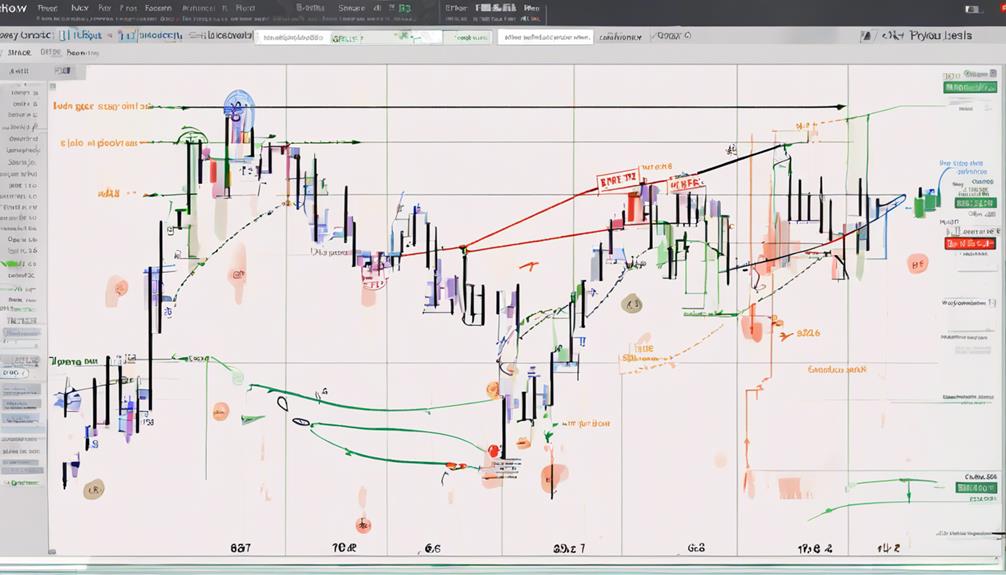
Key pivot levels, such as the central pivot point and support/resistance levels, play an essential role in technical analysis. These levels are derived from mathematical calculations based on the previous day's price data.
Traders use pivot levels to identify potential trend reversals, entry points, and exit points in the market.
Pivot Level Calculation Methods
Utilizing various calculation methods, traders can pinpoint essential pivot levels that play a pivotal role in determining potential support and resistance areas for making informed trading decisions.
Classic pivot points rely on the previous day's high, low, and closing prices to establish key levels.
Woodie pivot points factor in the open price within the previous day's range for their calculations.
Camarilla pivot points, or the Camarilla Equation, stress the significance of the prior day's range when determining pivotal levels.
Identifying these key pivot levels involves analyzing the central pivot point's relationship to support and resistance levels to inform trading decisions.
Utilizing Pivot Level Indicators
Pivot level indicators play an essential role in technical analysis by identifying significant price levels derived from the previous day's high, low, and closing prices. These levels, including the main pivot point, support, and resistance levels, help traders determine potential entry and exit points in the market.
Support levels act as floors where the price tends to find buying interest, while resistance levels act as ceilings where selling pressure may emerge. By utilizing pivot level indicators, traders can make more informed decisions based on historical data, enabling them to assess market sentiment and anticipate possible price movements.
This analytical approach enhances the precision of trading strategies and assists in maneuvering through the complexities of financial markets efficiently.
Analyzing Price Action
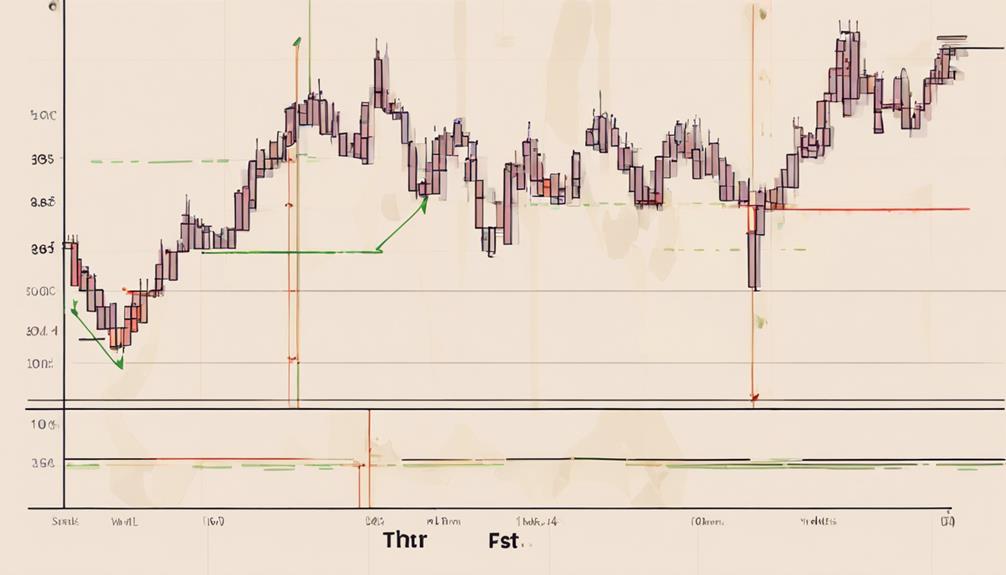
Analyzing price action at pivot points involves examining candlestick patterns, identifying key support and resistance levels, and correlating volume and momentum indicators.
Candlestick patterns provide insights into market sentiment, while support and resistance levels near pivot points can signal potential breakout opportunities.
Monitoring volume and momentum can help confirm the strength of price movements observed at pivot points, enhancing the overall analysis of market dynamics.
Candlestick Patterns Analysis
When examining market dynamics around pivot points, an important aspect to take into account is the analysis of candlestick patterns, as they offer valuable insights into price action behavior.
- Candlestick patterns provide key indications of market sentiment near pivot points.
- Analyzing these patterns helps traders anticipate potential reversals or continuations.
- Common patterns like doji, hammer, and engulfing patterns can signal shifts in market sentiment, aiding in decision-making processes.
Understanding candlestick patterns in conjunction with pivot points can greatly enhance trading strategies, enabling traders to make more informed decisions and manage risks effectively. By utilizing candlestick patterns to validate pivot point signals, traders can improve the accuracy of their entry and exit points, leading to more successful trading outcomes.
Support and Resistance Levels
Amidst the intricate world of technical analysis, delving into the domain of price action surrounding pivot points reveals essential insights into identifying support and resistance levels.
Analyzing how price behaves around these key pivot levels provides traders with valuable information on potential support and resistance zones. Breakouts above resistance or below support at pivot points can signal significant market movements, offering trading opportunities.
Reversals frequently occur near pivot points, underscoring their significance in decision-making. It is vital to take into account the prevailing trend when utilizing pivot points to validate trading signals effectively.
Incorporating other technical indicators alongside pivot points can enhance signal confirmation and improve overall trading precision.
Volume and Momentum Correlation
Examining the relationship between volume and momentum is essential in understanding the dynamics of price action around pivot points.
- High volume with price movement can indicate strong momentum in the direction of the pivot point.
- Analyzing volume and momentum can help traders validate potential breakouts or reversals at pivot levels.
- Price action supported by increasing volume suggests a higher probability of a successful trade near pivot points.
Understanding how volume and momentum correlate with pivot points is vital for traders to confirm potential breakouts accurately. By paying close attention to these indicators, traders can make more informed decisions and manage risks effectively in their trading strategies.
Utilizing Different Pivot Types
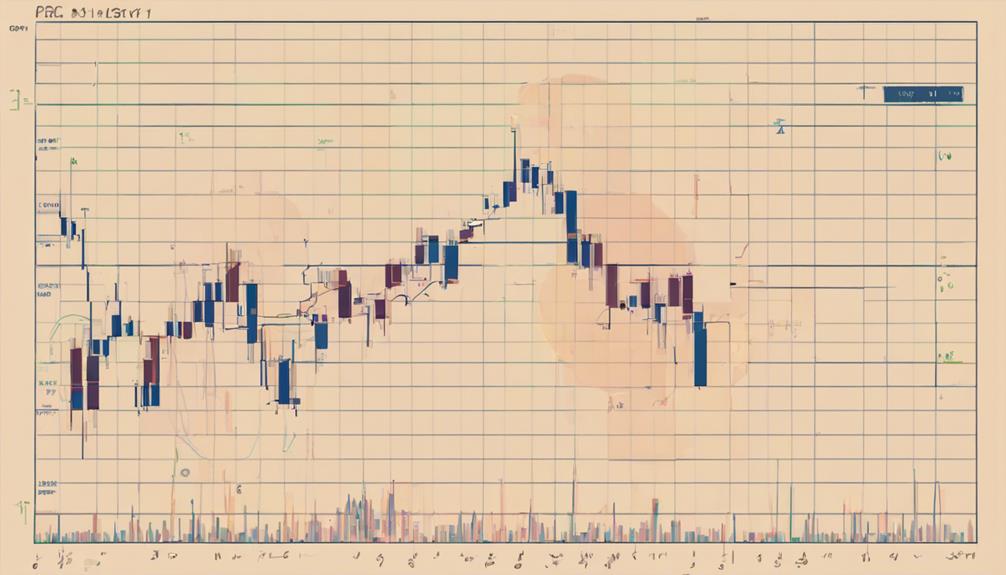
Exploring the various pivot point types, such as Classic, Camarilla, and Woodie pivots, allows traders to enrich their technical analysis with unique levels of support and resistance.
Classic pivots, derived from the previous day's high, low, and close prices, are commonly used in trading strategies. They provide a central pivot point with support and resistance levels above and below it.
On the other hand, Camarilla pivots offer more support and resistance levels compared to Classic pivots, providing traders with additional reference points for potential market reversals or breakouts.
Woodie pivots, calculated using the previous day's high, low, and opening prices, offer a different perspective on support and resistance levels.
Each pivot type presents traders with distinct levels to contemplate when making trading decisions, contributing to a more detailed analysis of market movements and potential entry or exit points in their trading strategy.
Developing Trading Strategies
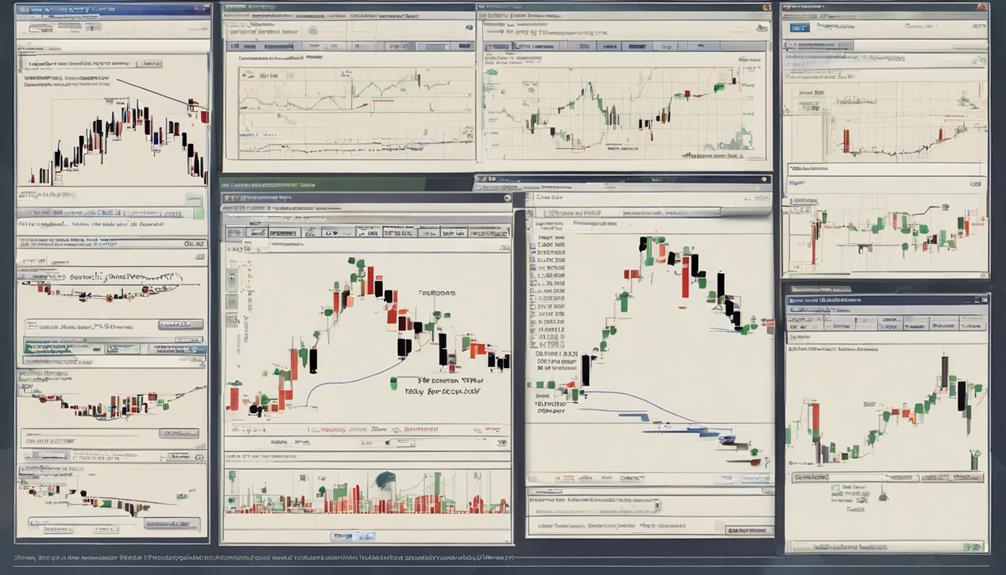
Incorporating pivot points as key support and resistance levels into trading strategies enhances the technical analysis framework for determining ideal entry and exit points based on price action dynamics.
Utilize pivot points to define key levels where price may reverse or continue its trend, aiding in strategic decision-making.
Incorporate pivot points in setting stop-loss orders and profit targets to manage risk effectively.
Adjust trading strategies based on the behavior of price action around pivot points, considering potential breakout or reversal opportunities.
Practicing Pivot Point Analysis
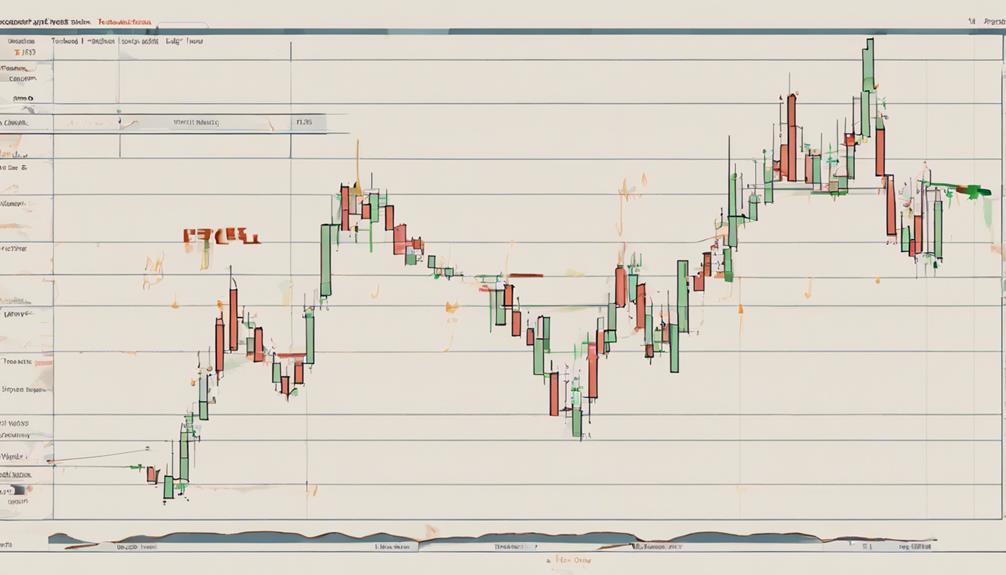
Practicing pivot point analysis involves mastering the calculation and application of pivot points using historical price data to identify key levels for making informed trading decisions. Calculating pivot points typically involves using the formula (High + Low + Close) / 3.
By plotting pivot points on a chart using historical data for various time frames, traders can pinpoint essential support and resistance levels vital for determining potential entry and exit points. These levels act as significant markers where price trends may reverse or accelerate, guiding traders in their decision-making process.
To refine their pivot point analysis skills, traders can experiment with different strategies in a demo account to observe how price action interacts with these levels. Monitoring price behavior around pivot points helps traders gain confidence in their analysis and adapt their trading approach accordingly, enhancing their ability to make effective trading decisions based on pivot point calculations.
Staying Informed on Market Events

To remain well-informed on market events, it is essential to actively engage with reputable financial news sources and platforms such as Bloomberg, Reuters, and CNBC. These sources provide up-to-date information on market trends, economic developments, and geopolitical events that can impact trading decisions.
In addition to following financial news websites, traders should also monitor economic calendars for key events such as interest rate decisions, GDP releases, and employment reports. This allows traders to anticipate market reactions and adjust their strategies accordingly.
Utilizing social media platforms like Twitter and StockTwits can provide real-time updates on market movements and expert opinions, helping traders stay ahead of the curve. Subscribing to market analysis newsletters and reports from reputable sources offers valuable insights into potential market-moving events, enhancing traders' decision-making process.
Engaging in online trading communities and forums enables traders to exchange information and discuss market events with peers and experts, fostering a collaborative learning environment.
Refining Your Trading Approach

Analyzing strategy adjustments for precision and enhancing risk management techniques are essential aspects of refining your trading approach with pivot points.
By carefully examining price action around key levels and setting profit targets based on historical data, traders can optimize their decision-making process.
Additionally, confirming pivot point signals with other technical indicators can provide a more thorough view of market dynamics, leading to more informed trading decisions.
Strategy Adjustments for Precision
In the pursuit of refining one's trading approach for precision, the adjustment of pivot point strategies involves meticulous fine-tuning of entry and exit points. When aiming for precision in trading, incorporating additional technical indicators alongside pivot points can enhance strategy accuracy.
Adapting pivot point strategies to varying market conditions and levels of volatility is essential for maintaining precision. Using historical price data to calibrate pivot point levels can greatly improve the quality of trading decisions.
Achieving precision with pivot point strategies also entails setting realistic profit targets and implementing effective risk management measures.
- Incorporating additional technical indicators
- Adapting strategies to different market conditions
- Using historical price data for calibration
Enhancing Risk Management Techniques
Implementing effective risk management techniques is paramount in honing your trading approach when utilizing pivot point analysis. Setting appropriate stop-loss orders based on pivot point levels can help mitigate potential losses and safeguard your capital.
Adapting position sizes in accordance with the distance to the nearest pivot point level can enhance risk management by controlling exposure. Integrating pivot points with other technical indicators to validate signals can strengthen the efficacy of your risk management strategy.
Continuously reviewing and modifying your risk management plan based on market dynamics and performance is essential for achieving more favorable trading results. By incorporating these practices, traders can better navigate market fluctuations, capitalize on support and resistance levels, and optimize their overall risk management approach.
Enhancing Entry and Exit Decisions
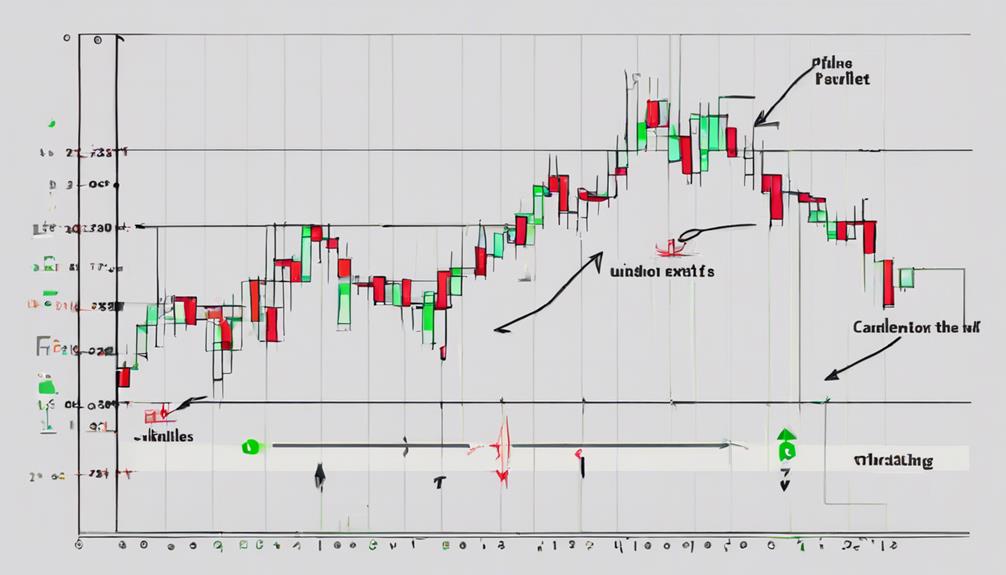
To optimize trading outcomes, mastering pivot point technical analysis involves leveraging key support and resistance levels to refine entry and exit decisions effectively. Traders can enhance their trading decisions by considering the following:
- Identifying Ideal Entry Points: Pivot points help traders pinpoint key levels where price is likely to reverse, offering strategic entry points for trades.
- Setting Stop-Loss Orders: Utilizing pivot points enables traders to place stop-loss orders just below support levels or above resistance levels, assisting in managing risk.
- Establishing Profit Targets: Traders can use pivot points to determine potential profit targets by identifying levels where price may encounter hurdles, aiding in setting realistic profit objectives.
Achieving Success in Trading
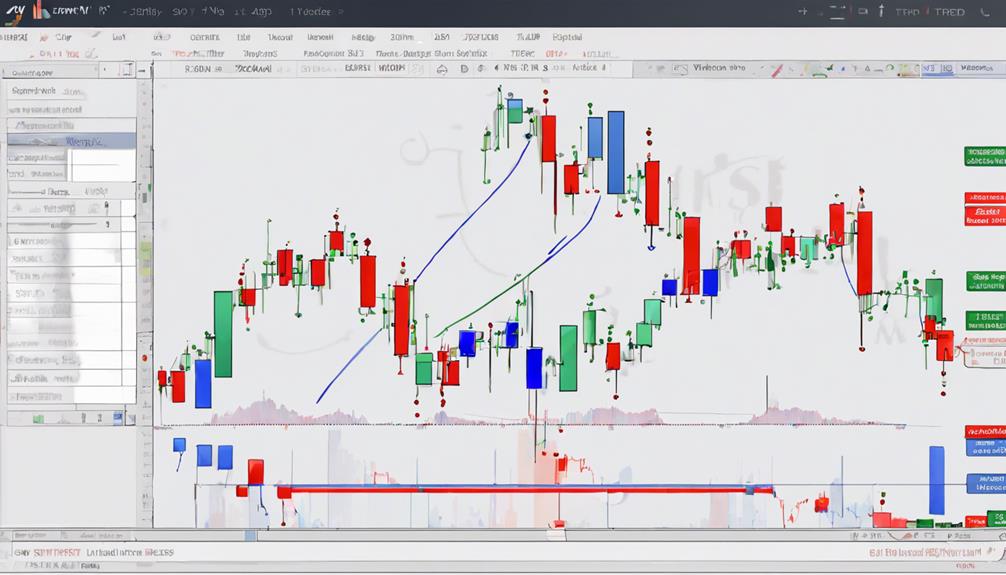
Mastering the intricacies of trading with pivot points depends on the accurate calculation and strategic utilization of support and resistance levels derived from historical price data. Success in trading hinges on effectively interpreting these levels to make informed entry and exit decisions. Utilizing pivot points allows traders to pinpoint key price levels where the market may reverse or continue its current trend. By incorporating pivot points into their trading strategies, traders can enhance their ability to enter and exit trades at strategic points. The table below illustrates how support and resistance levels can guide traders in making successful trading decisions.
| Aspect | Description | Importance |
|---|---|---|
| Support Levels | Price levels where a downtrend may pause or reverse | Key for entry |
| Resistance Levels | Price levels where an uptrend may pause or reverse | Key for exit |
| Entry and Exit | Utilizing pivot points to determine ideal points to enter and exit | Critical success |
To achieve success in trading, it is essential to not only understand how to calculate pivot points correctly but also to integrate them effectively into one's overall trading strategy.
Frequently Asked Questions
How Do You Master Pivot Points?
To master pivot points, traders must understand several key components:
- Pivot point calculations
- Utilizing pivot point strategies
- Interpreting pivot point indicators
- Recognizing pivot point support and resistance levels
This entails analyzing price action around pivot points, confirming signals with other technical indicators, and continually practicing and evaluating pivot point trading strategies.
Mastery requires a thorough understanding of how pivot points are derived and the ability to apply them effectively in trading decisions.
How Do You Find the Pivot Point in Technical Analysis?
In technical analysis, the pivot point is typically calculated by adding the previous session's high, low, and closing prices together and dividing by three. This formula provides a central level that traders utilize to identify potential areas of support and resistance in the market.
Traders can then apply various techniques, such as Fibonacci extensions, to further enhance their analysis by determining possible price levels for entry and exit points based on the pivot point's support and resistance levels.
Do Professional Traders Use Pivot Points?
'Separating the wheat from the chaff, professional traders often utilize pivot points as a fundamental tool in their technical analysis repertoire. The pros of using pivot points include the ability to identify key support and resistance levels for informed trading decisions.
However, common mistakes can arise from solely relying on pivot points without considering other indicators. Real-life examples of professional traders successfully leveraging pivot points underscore their significance.
Expert insights emphasize the importance of incorporating pivot points judiciously within a broader trading strategy.'
Which Time Frame Is Best for Pivot Point Trading?
The best time frame for pivot point trading depends on the trader's preferred strategy and goals.
Intraday strategies often utilize shorter time frames like 15-minute or hourly charts for capturing short-term price movements.
Swing traders may opt for daily or weekly time frames to identify pivot points for longer-term trades.
Long-term investors could consider using weekly or monthly time frames for a broader perspective, while scalping methods typically require very short time frames to capitalize on quick market fluctuations.
Conclusion
To sum up, mastering pivot point technical analysis requires a deep understanding of calculations, key levels, price action, and various pivot types.
Developing effective trading strategies, staying informed, refining your approach, and enhancing entry and exit decisions are essential for success in trading.
By implementing these steps diligently, traders can navigate the market with confidence and achieve their financial goals.
Stay tuned for more insightful tips and strategies to further enhance your trading skills.
